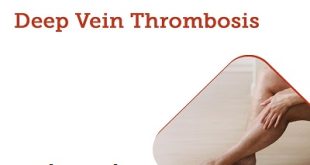Definition
Duane syndrome (DS) is a rare, congenital disorder of eye movement. In most patients, DS is diagnosed by the age of 10 years. DS is a miswiring of the eye muscles that cause some eye muscles to contract when they should not and other eye muscles not to contract when they should. People with DS have a limited and sometimes absent ability to move their eye outward toward the ear (ie, abduction), and in most cases, they have a limited ability to move the eye inward toward the nose (ie, adduction).
Duane syndrome
Types of duane syndrome
The three types of Duane syndrome present as follows:
Duane syndrome Type 1: The ability to move the affected eye(s) outward toward the ear (abduction) is limited, but the ability to move the affected eye(s) inward toward the nose (adduction) is normal or nearly so. The eye-opening (palpebral fissure) narrows and the eyeball retracts into the orbit when looking inward toward the nose (adduction). When looking outward toward the ear (abduction), the reverse occurs.
Duane syndrome Type 2: The ability to move the affected eye(s) inward toward the nose (adduction) is limited, whereas the ability to move the eye outward (abduction) is normal or only slightly limited. The eye-opening (palpebral fissure) narrows and the eyeball retracts into the orbit when the affected eye(s) attempts to look inward toward the nose (adduction).
Duane syndrome Type 3: The ability to move the affected eye(s) both inward toward the nose (adduction) and outward toward the ear (abduction) is limited. The eye opening narrows and the eyeball retract when the affected eye(s) attempts to look inward toward the nose (adduction).
History
The syndrome was first described by ophthalmologists Jakob Stilling (1887) and Siegmund Türk (1896), and subsequently named after Alexander Duane, who discussed the disorder in more detail in 1905.
Epidemiology
United States
The frequency of DS in the general population of individuals with eye movement disorders (strabismus) is approximately 1-5%. The most common clinical presentation is type 1 DS (70-80%) followed by type 2 (7%) and type 3 (15%). Involvement of both eyes is less common than involvement of 1 eye only. Approximately 80% of cases are unilateral. Of the unilateral cases, the left eye is most often affected (60-72%).
International
DS accounts for 1% of all cases of strabismus. Unilateral retraction syndrome is the rule; the left eye is distinctly involved in 60% of cases, the right eye is involved in 20% of cases, and both eyes are involved in 20% of cases.
Risk factors
The only known risk factor of an isolated type of Duane Retraction Syndrome is an affected parent, which leads to a 50% chance of passing the gene onto offspring. This risk, however, is only associated with 10% of isolated cases, as 90% of these cases occur sporadically. An affected parent is also a risk factor for the syndromic forms; however, the chance of passing a gene onto offspring varies according to the syndrome.
Causes of duane syndrome
- Duane syndrome is caused by miswiring of the eye muscles. Duane syndrome most likely happens around the sixth week in the uterus. It is due to the abnormal development of the eye nerve muscles. The sixth cranial nerve that controls eye muscle movement to rotate the eyes out towards the ear does not develop normally. It is not known why this happens but it is the misdirection of the nerve fibers that results in opposite muscles being supplied by the same nerve.
- Most cases of Duane syndrome are sporadic. Ten percent of people with Duane syndrome have familial links. There have been both recessive and dominant forms documented. It has been known to skip generations in dominant cases and has been seen to range in severity in the same family. Most cases of Duane syndrome with familial ties are not associated with other anomalies.
- Some genetic and environmental causes are known to play a role in Duane syndrome. Duane syndrome has been found in autosomal recessive disorders that include deafness, vascular malformations, facial weakness and learning disabilities. How common is Duane syndrome? It affects around one in a thousand people.
Diagnosis and tests
Duane’s syndrome is diagnosed based on clinical observations. Affected individuals will have a strabismus, which is when the eyes are not in the same line of view. Many times patients will present with more head movement in order to view objects while preventing diplopia. This may also lead to a constant head tilt. This is more commonly found a year after birth because babies tend to have rapid eye movements and it is not uncommon for newborns to have trouble controlling their eyes as they are still learning to control their body. As eye movements become more purposeful, the irregularity of movement is observed.
Most people observe the unusual eye position in pictures of the child and will often think that the “good” eye is actually the deviating one, as the affected eye remains straight. The picture to the left depicts a newborn baby that was later diagnosed with Duane’s syndrome in the left eye and shows how the wrong eye may think of as the “bad” one. This baby appears to be looking straight so the right eye looks like it is deviating medially.
Treatment and medications
- The majority of patients remain symptom-free and able to maintain binocularity with only a slight face turn. Amblyopia is uncommon and, where present, rarely dense. This can be treated with occlusion, and any refractive error can also be corrected.
- Duane syndrome cannot be cured, as the “missing” cranial nerve cannot be replaced and, traditionally there has been no expectation that surgery will result in an increase in the range of eye movement. Surgical intervention, therefore, has only been recommended where the patient is unable to maintain binocularity, where they are experiencing symptoms, or where they are forced to adopt a cosmetically unsightly or uncomfortable head posture in order to maintain binocularity.
- The aims of surgery are to place the eye in a more central position and, thus, place the field of binocularity more centrally also, and to overcome or reduce the need for the adoption of an abnormal head posture. Occasionally surgery is not needed during childhood, but becomes appropriate later in life, as head position changes (presumably due to progressive muscle contracture).
How do you prevent duane syndrome?
- Sporadic Duane’s syndrome cannot be prevented as they occur spontaneously in offspring of normal parents.
- However persons with familial DRS wherein other family members are also similarly affected, may be advised to seek genetic counselling to understand the risk of having an affected baby. Prenatal diagnosis is possible for pregnancies at increased risk i.e. if the condition is present in a family member.
 Diseases Treatments Dictionary This is complete solution to read all diseases treatments Which covers Prevention, Causes, Symptoms, Medical Terms, Drugs, Prescription, Natural Remedies with cures and Treatments. Most of the common diseases were listed in names, split with categories.
Diseases Treatments Dictionary This is complete solution to read all diseases treatments Which covers Prevention, Causes, Symptoms, Medical Terms, Drugs, Prescription, Natural Remedies with cures and Treatments. Most of the common diseases were listed in names, split with categories.







